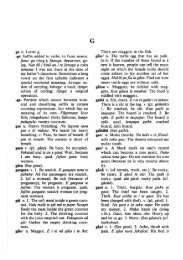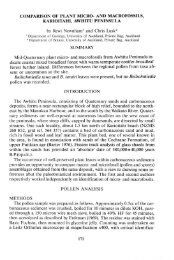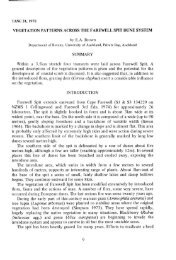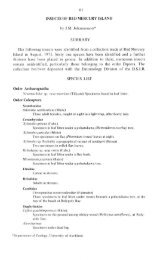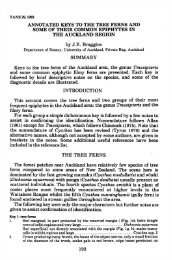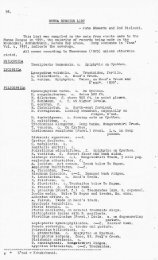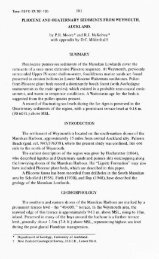aspects of fish biology form and function
aspects of fish biology form and function
aspects of fish biology form and function
Create successful ePaper yourself
Turn your PDF publications into a flip-book with our unique Google optimized e-Paper software.
structure used attract prey.<br />
king<strong>fish</strong> (Seriola gr<strong>and</strong>is)<br />
gurnard<br />
(Chelodonichthys kumu)<br />
long-snouted pipe<strong>fish</strong><br />
(Stigmatopora macropterygia)<br />
butter<strong>fish</strong> {Odax pullus)<br />
296a<br />
two-spot demoiselle (Chromis<br />
eagle ray<br />
dispilus)<br />
(My liobatus tenuicaudatus)<br />
porae<br />
(Cheilodactylus douglasi)<br />
mottled blenny<br />
(Forsterygion<br />
Q^'Sr^a®^ varium)<br />
Figure 5: Various conditions <strong>of</strong> the dorsal, pectoral <strong>and</strong> ventral fins.<br />
The pelvic fins <strong>of</strong> the bottom dwelling <strong>fish</strong> such as the<br />
tripterygiids <strong>and</strong> blue cod (Parapercis colias) are reduced <strong>and</strong> thickened<br />
to act as props for the <strong>fish</strong> resting on the substratum. The lower rays <strong>of</strong><br />
the pectoral fins are usually unbranched <strong>and</strong> thickened. Some bottom<br />
living <strong>fish</strong> <strong>of</strong> shallow turbulent waters are able to cling, grasp or<br />
anchor themselves to the substratum to prevent being buffeted against<br />
the rocks. The hiwihiwi (Chironemus marmoratus) has the lower pectoral



